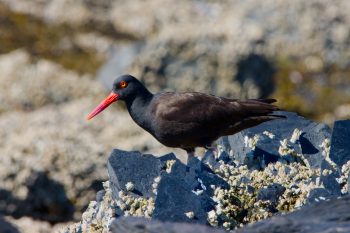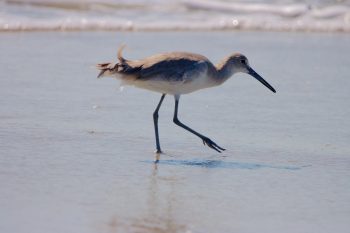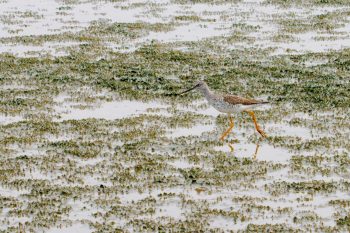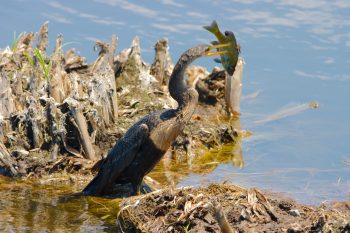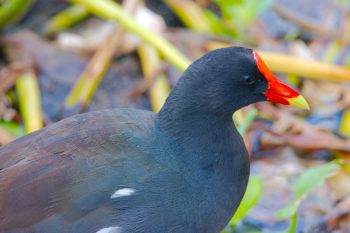On our second morning in Juneau we walked to False Outer Point. There is a causeway to Shaman Island that is walkable during exceptionally low tied and we happened to come when it was above water. We calculated that we had about a half hour before the water would rise to the top of the causeway. As it turns out, we miscalculated by about ten minutes and we had to wad back in about four inches of water. But we didn’t mind. We didn’t really get to explore the island very well in the 25 minutes we were there, but we did see a pair of black oystercatchers (Haematopus bachmani), which was a real treat. One was standing on one foot on top of a rock. The other one (this one) was moving around, presumable finding things to eat. The rocks around the island are covered with mussels, which is a large part of an oystercatcher’s diet, so it makes perfect sense that we’d see the here if we were going to see them at all. Am I glad yet that I brought my long lens? Yes, yes I am.
Tagged With: Shore Birds
Black Oystercatcher (Haematopus bachmani)
Willet (Tringa semipalmata)
We walked on the beach at the east end of the island this morning. It was a clear day with very bright sun so I wore a hat and shirt and put sunscreen on exposed skin. We looked for shells but didn’t find many. Past years have been good for shell-hunting but there don’t seem to be as many this year. That means that the beach is almost pure sand, which in general isn’t a bad thing. But it’s one less thing for us to do. We saw a few sandpipers as we walked including this willet (Tringa semipalmata). They are very distinctive birds and quite common on the beaches of North Carolina.
Greater Yellowlegs (Tringa melanoleuca)
Cathy and I visited friends in Delaware this weekend. We went to Prime Hook, a National Wildlife Refuge on Delaware Bay. The background of this photo makes it a little hard to see the bird at first, but otherwise, I like the picture. This is a greater yellowlegs (Tringa melanoleuca). They are differentiated from the lesser yellowlegs (T. flavipes) by their size (if seen side by side), by the Greater’s longer, thicker and slightly upturned bill. While we are in the northern most extent of their winter range, they migrate through on their way to the mid-latitudes of Canada for the summer.
Anhinga (Anhinga anhinga)
Cathy and I went to the Carl Bazemore Bird Walk on what we call Alligator Pond on Shoreline Drive, west of the bridge to Sunset Beach. We saw a few alligators in the distance as well as a few birds. The most interesting thing was this anhinga (Anhinga anhinga), catching fish quite close to us. The first fish we saw it catch was small. Then, however, it landed a pretty good size fish (it looks like a bluegill). I got a few shots of it swallowing the fish, so I can confirm that it was an entirely successful catch.
Common Gallinule (Gallinula galeata)
We went to Alligator Pond (a.k.a. the Carl Bazemore Bird Walk) again today. We saw the anhinga again but not close. We did, however, see an alligator as well as an adult and juvenile common gallinule (Gallinula galeata). They were moving around quite a bit but I was able to get close enough to get a pretty good photo of each of them. This is the adult bird. Of the two alligators we saw, one of them was quite close, lying on the surface in a clump of weeds and very well camouflaged. But it was close enough we weren’t going to miss it. I got some photos of that, as well.

